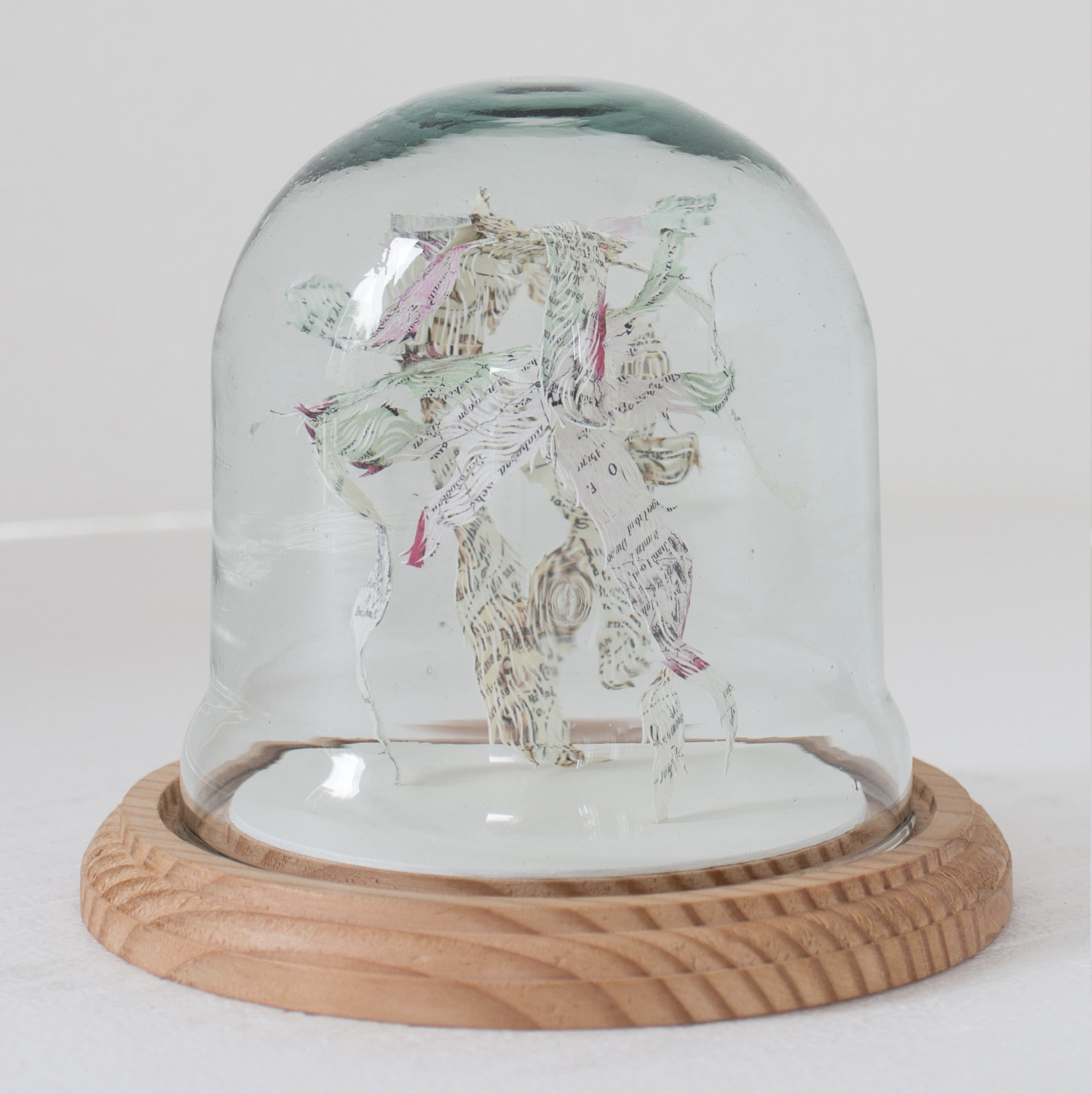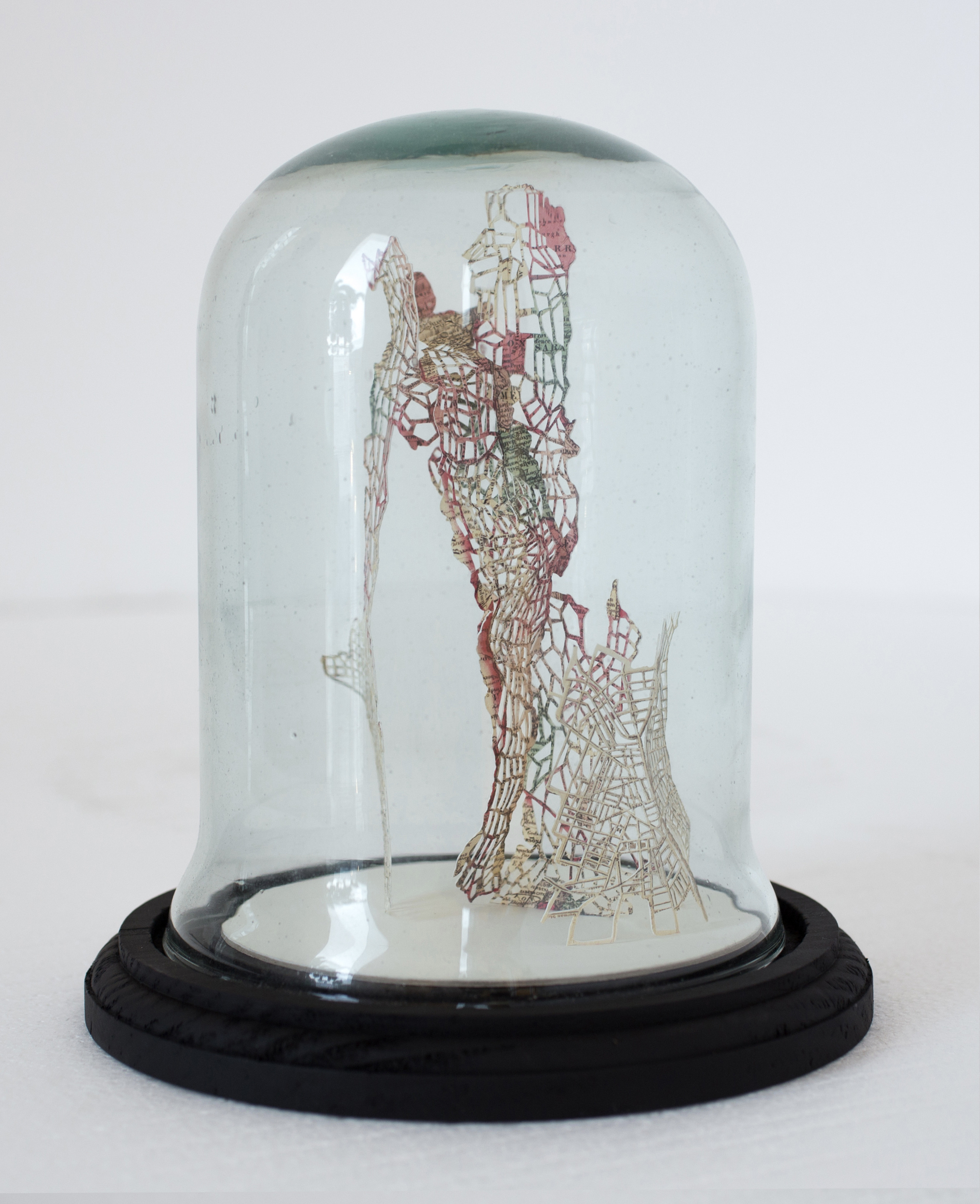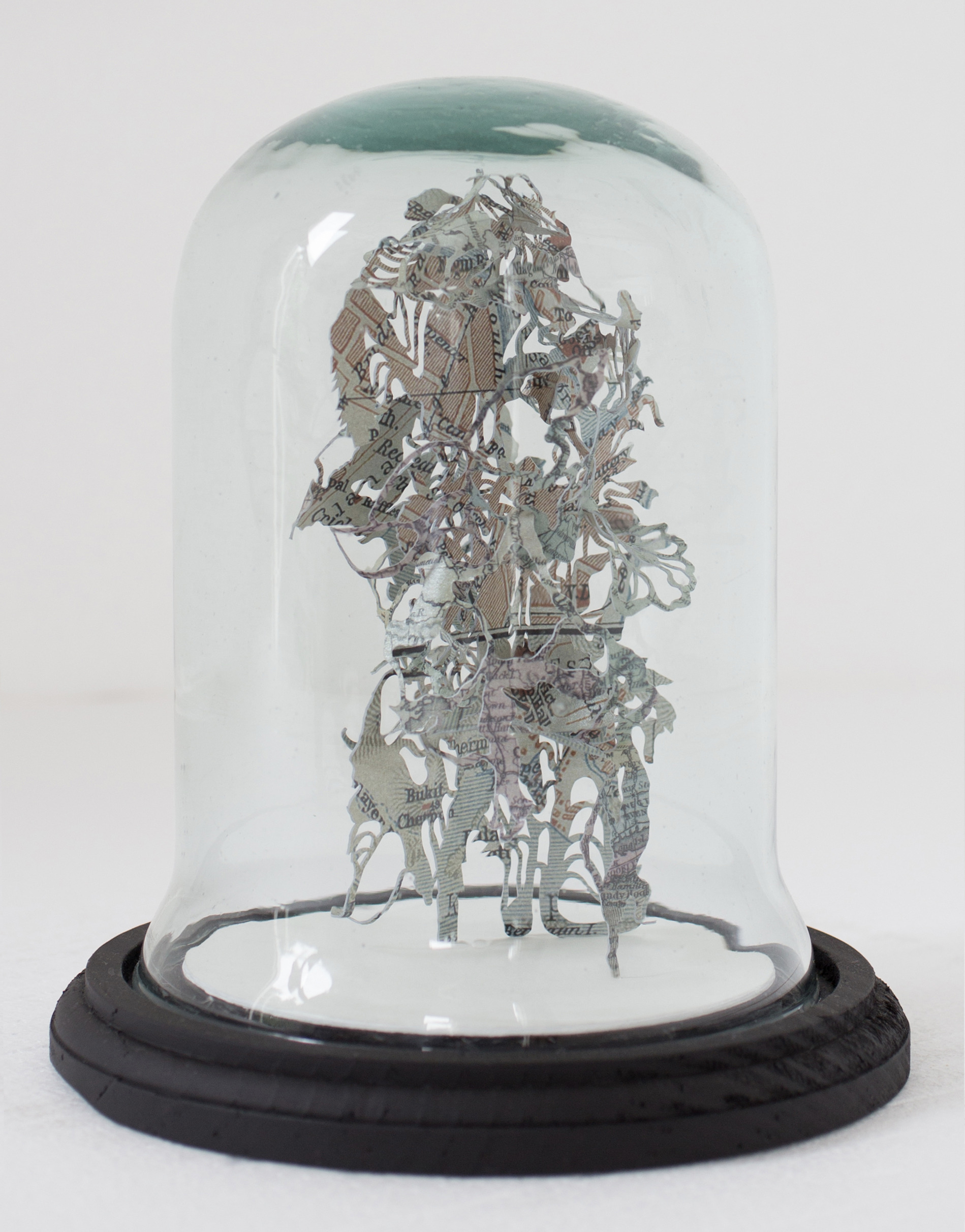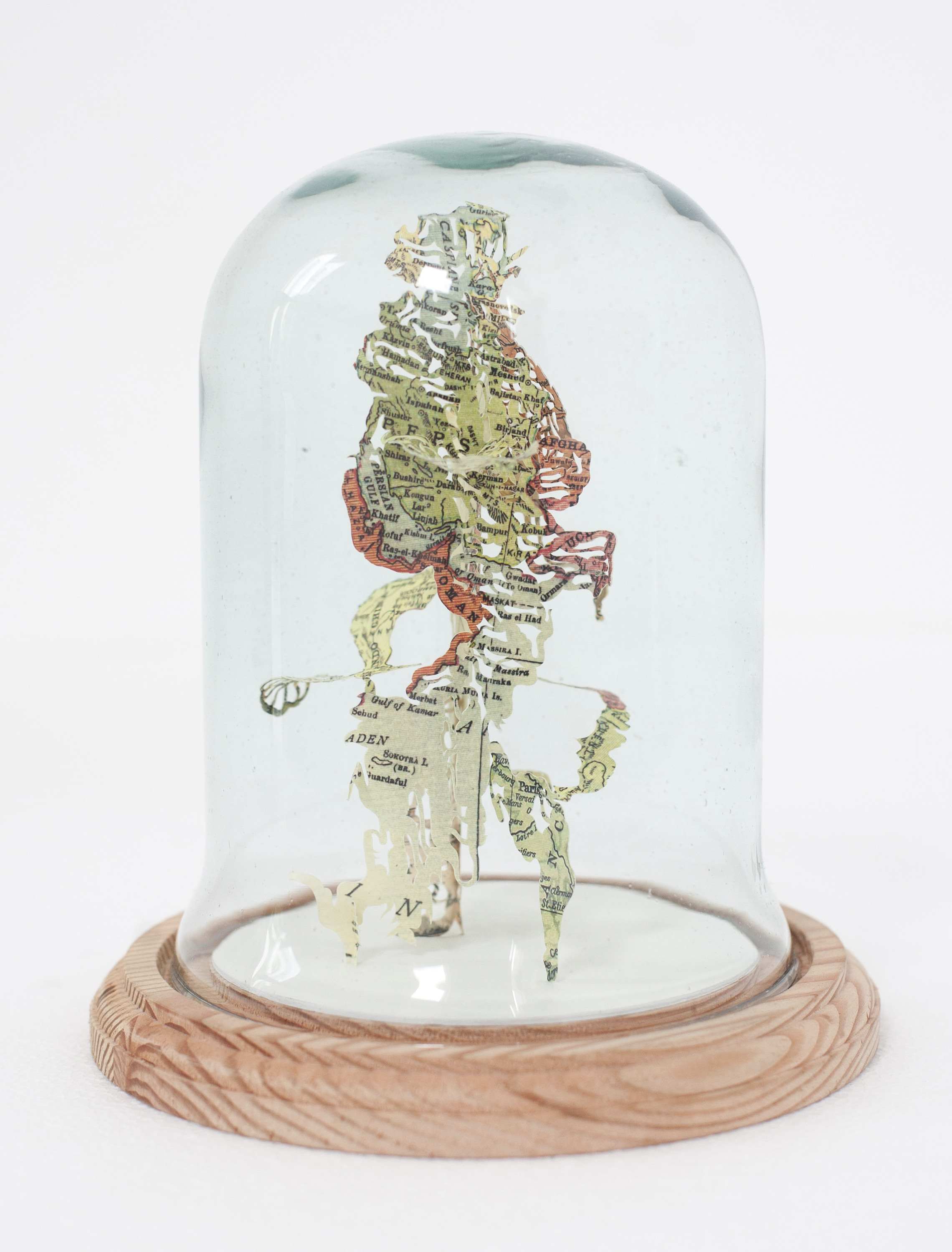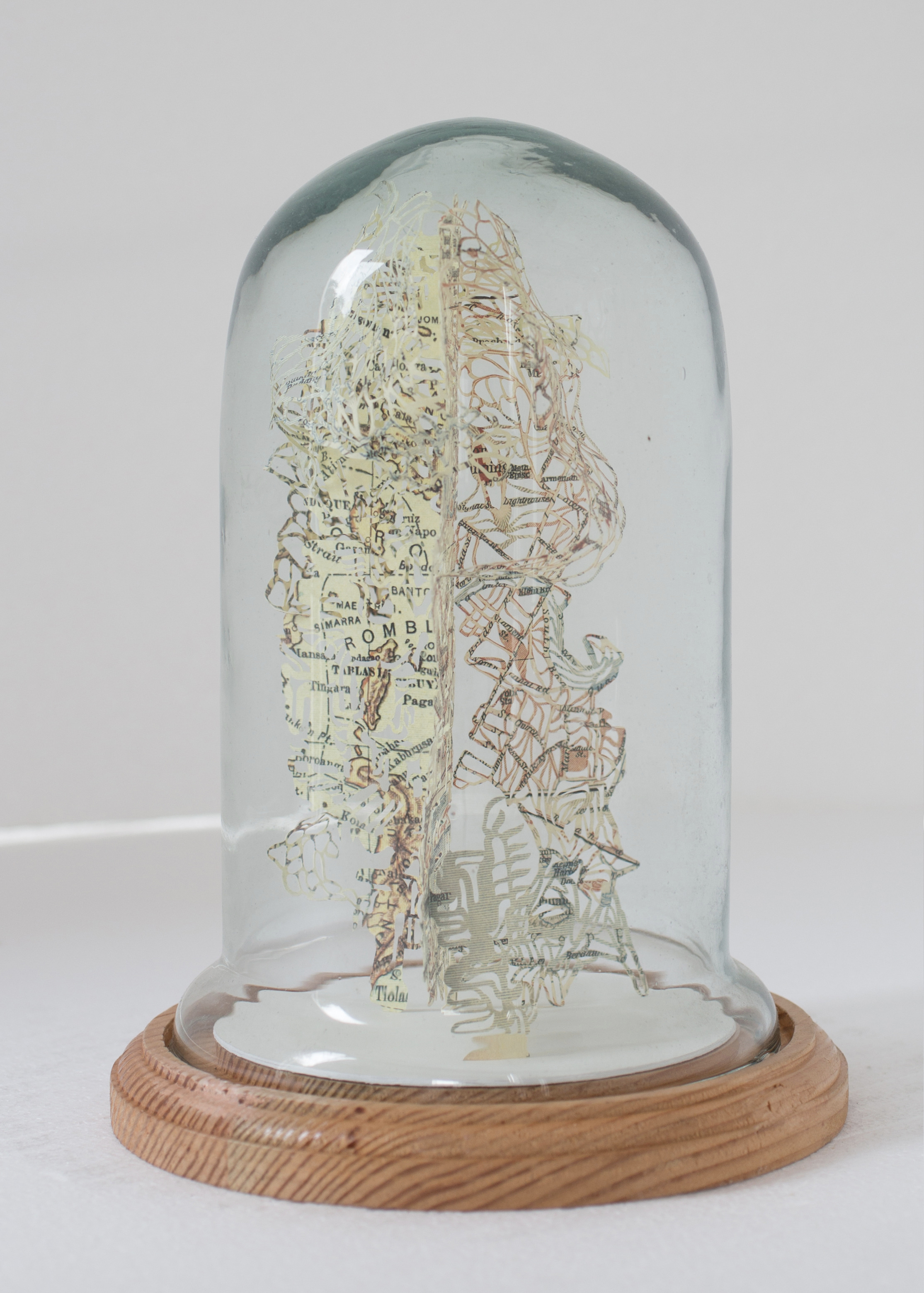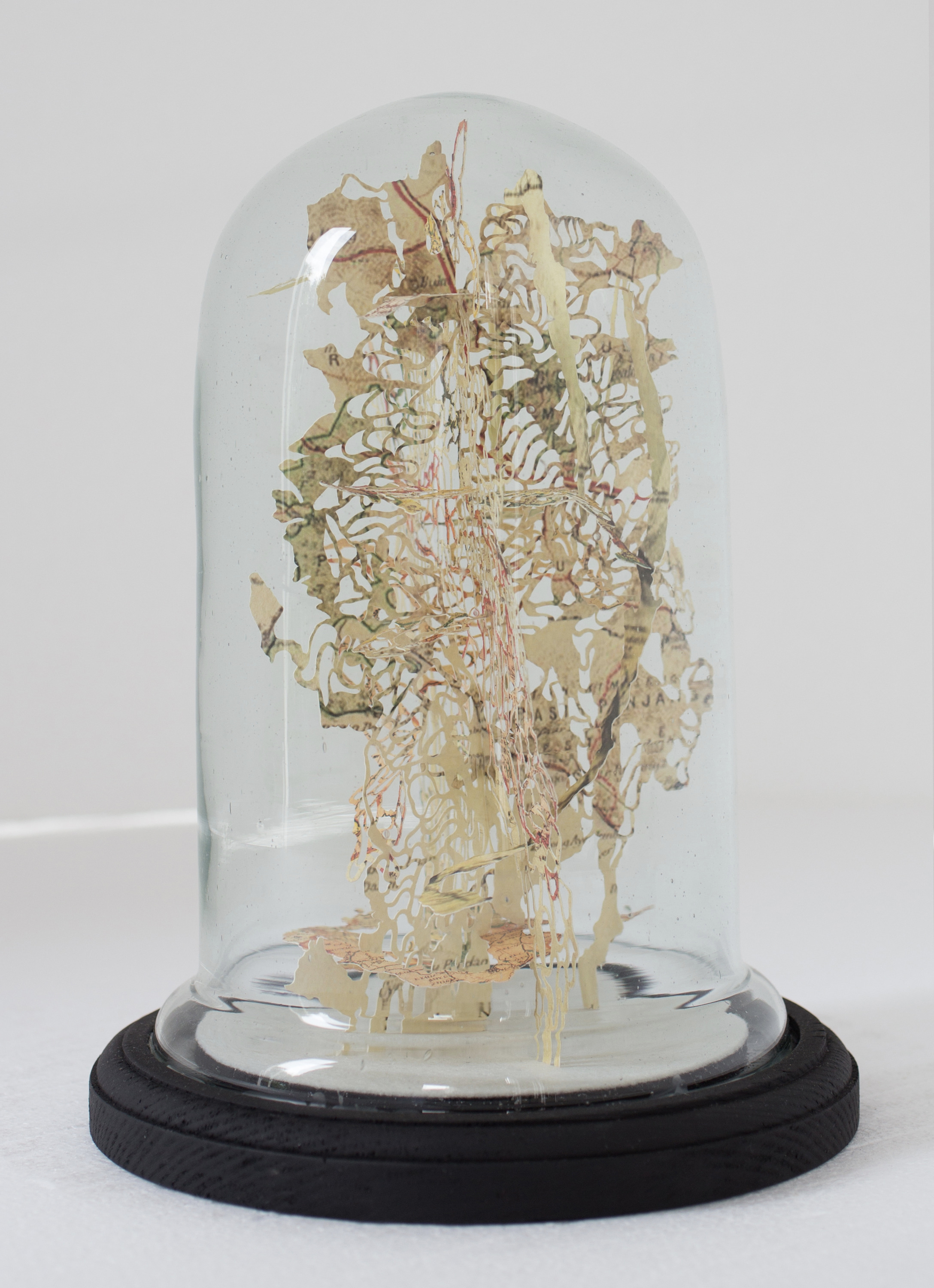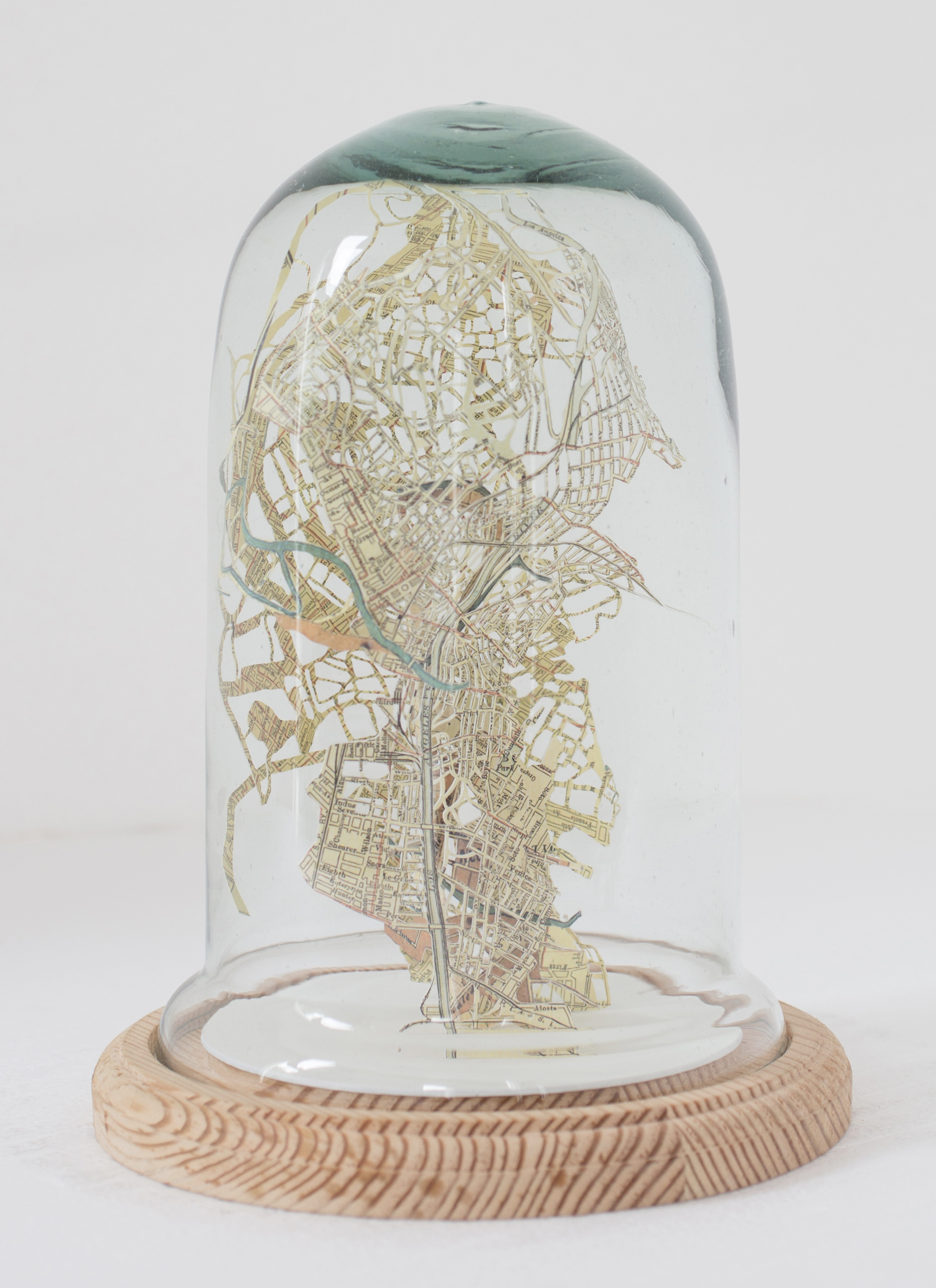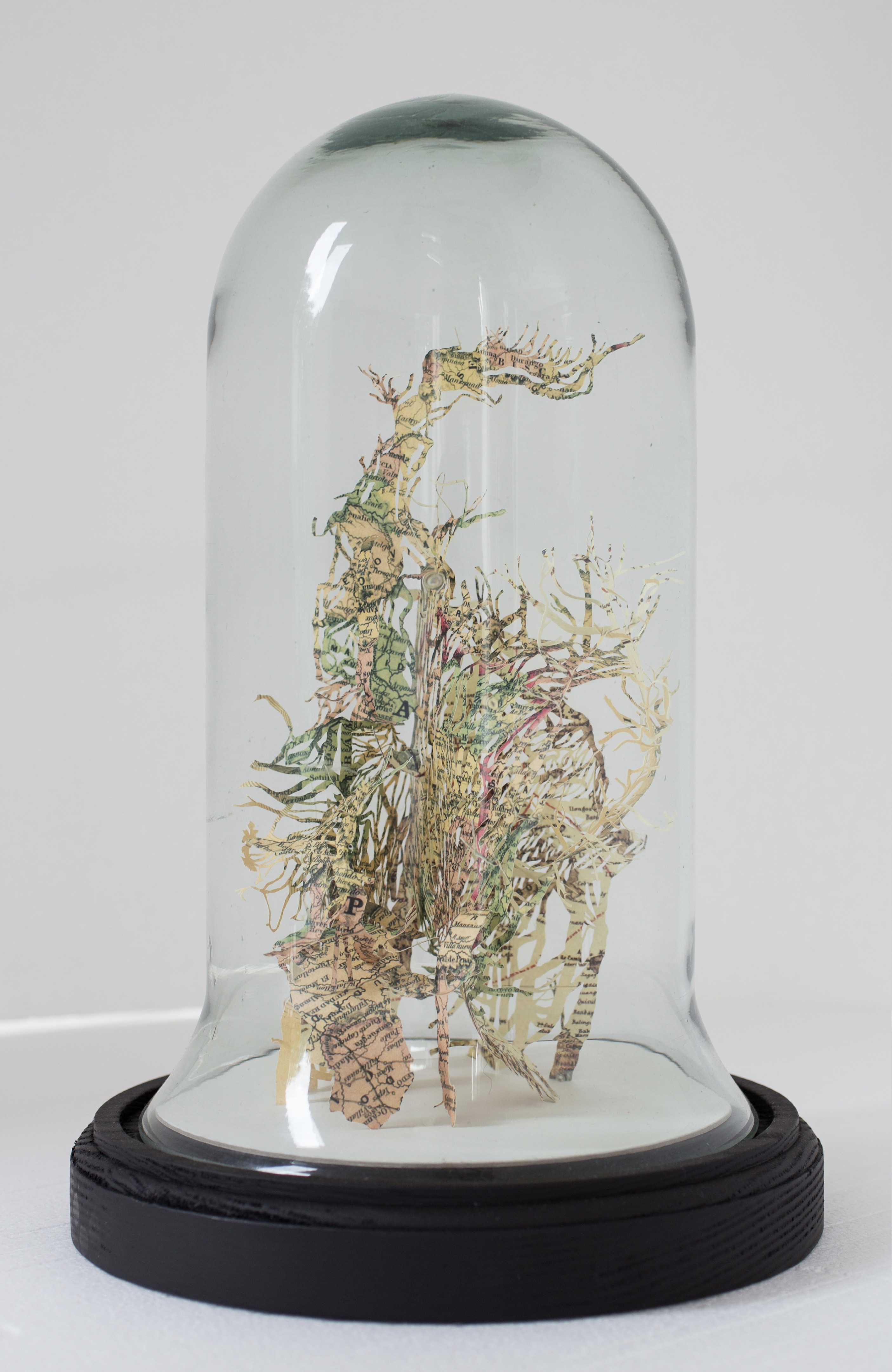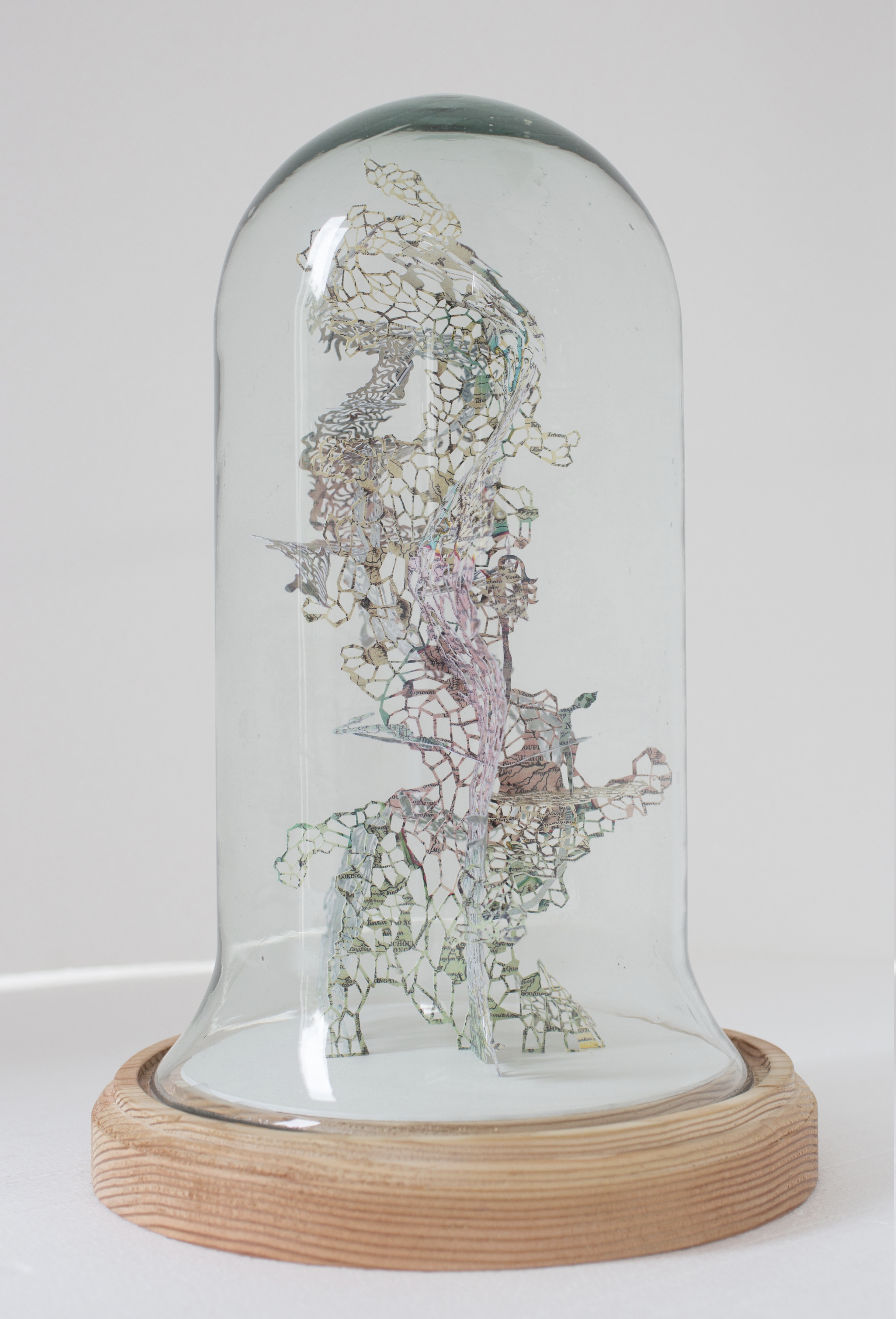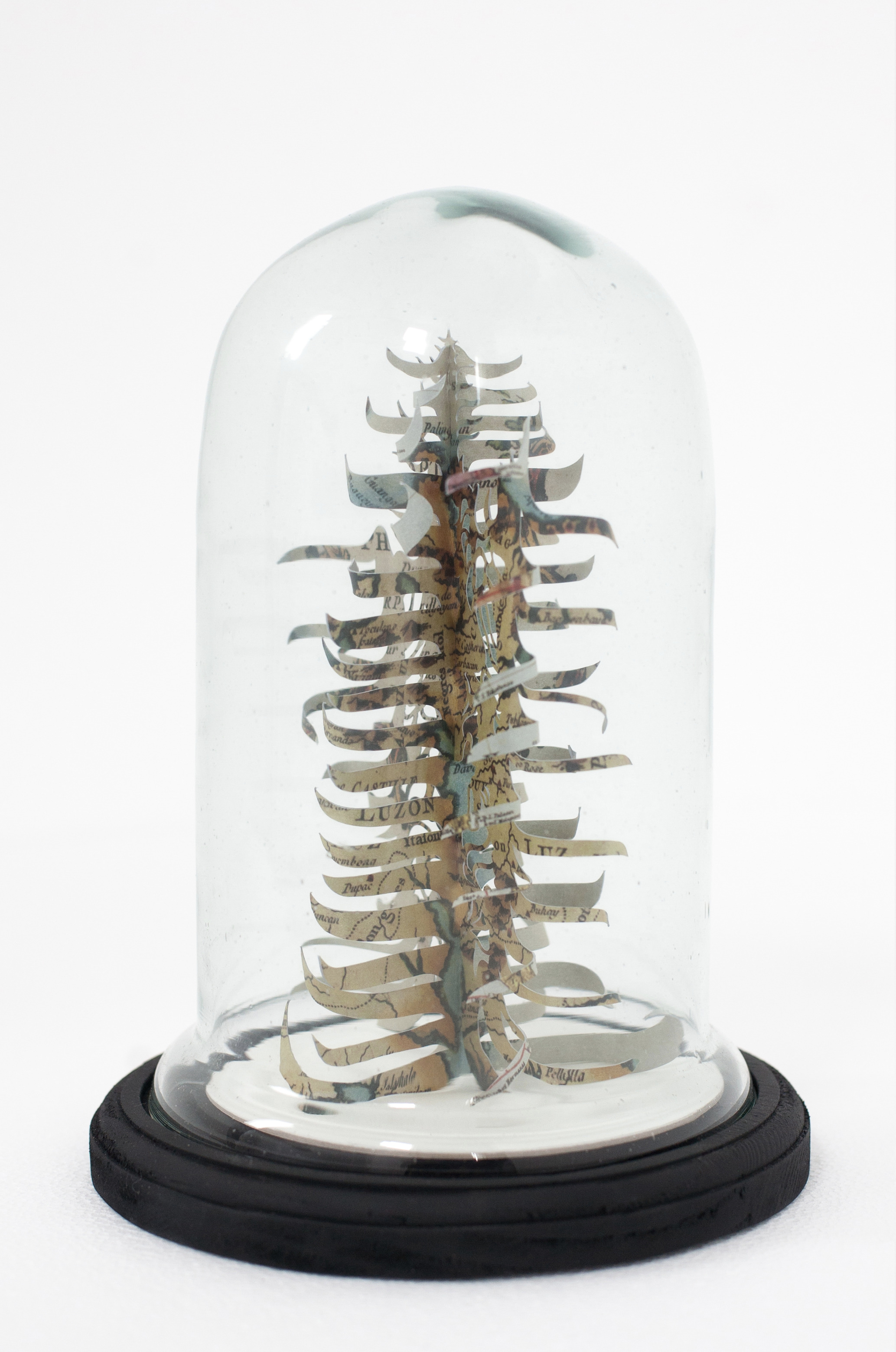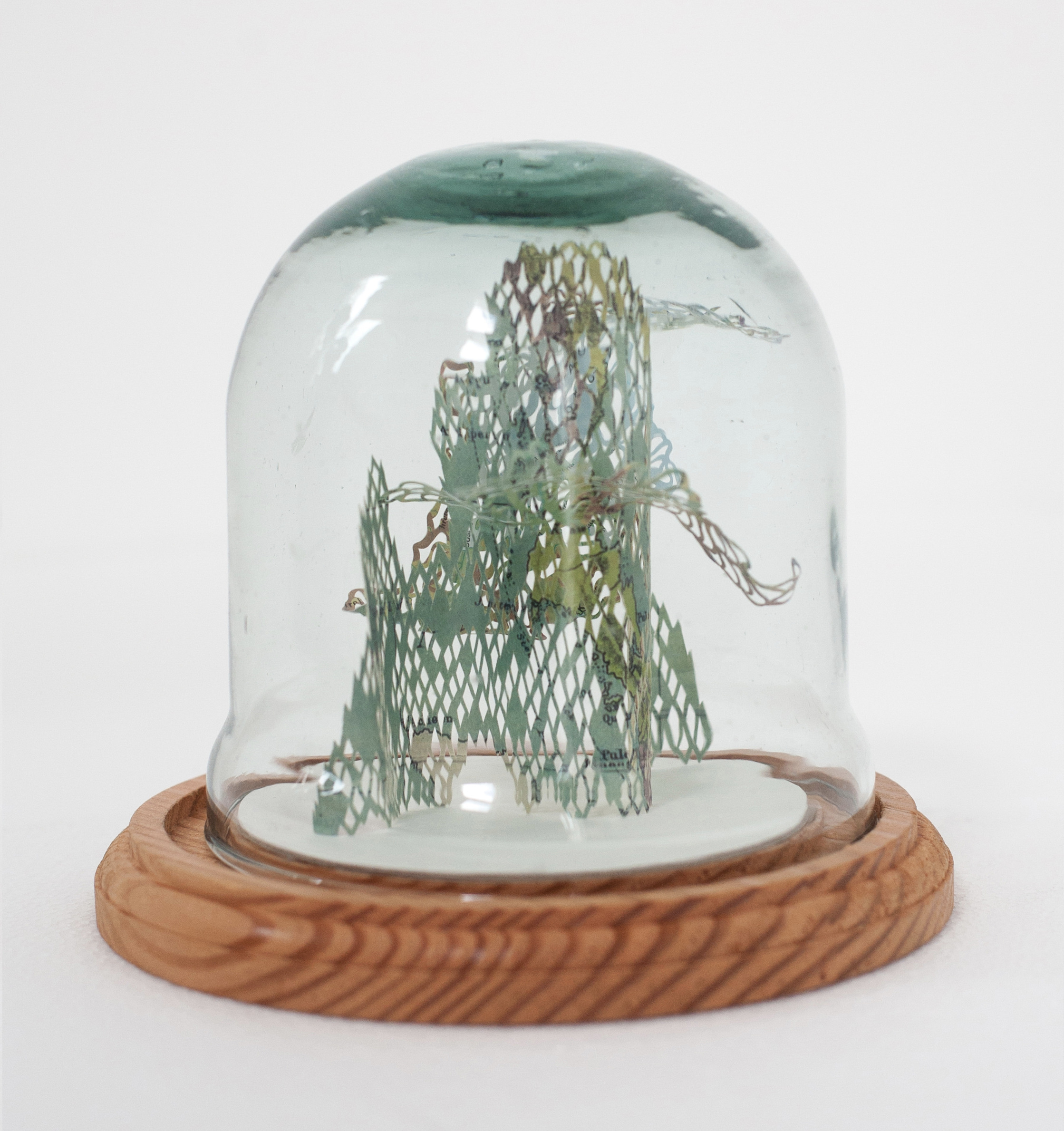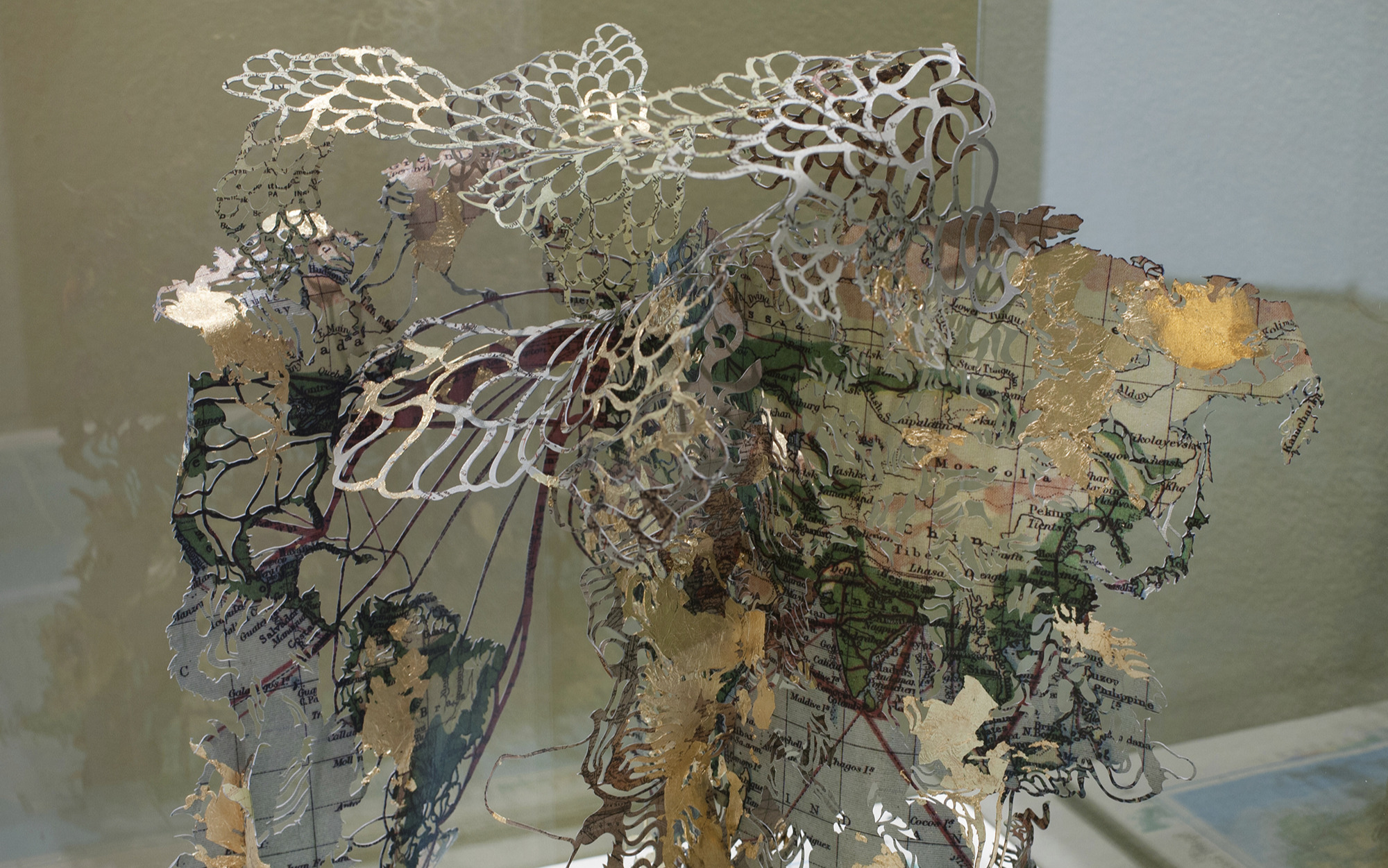
Isles
Ryan Villamael
Silverlens, Manila
Installation Views
About
Silverlens Galleries is pleased to present Isles, an exhibition by Ryan Villamael.
A map is a snapshot of the story of man. Through geopolitical delineations and divisions, it represents the narrative of political power, cultural life, and human longing in a particular point in history. A map is in itself a story. The odyssey of people groups across space and time, the ebb and flow of civilization, and regions of conflict and tension are, at a glance, captured in a map. Not only do maps function as instruments which represent the accepted and contested geopolitical boundaries, maps also serve as symbols of competing worldviews or ways upon which reality is first defined by power brokers or hegemons and subsequently apprehended by the masses.
Maps are instruments of power as well as human longing. It is both political and personal. It speaks of national aspirations as well as individual ambitions. Inasmuch as cartographers seek to present geopolitical reality as accurately as they understand it to be, maps turn out to be political and navigational instruments that only present partial truths, hiding the invisible realities of the marginalized in the fringes of its demarcated spaces. In a sense, maps conceal as much as they reveal.
—Ryan Villamael
For his sixth solo show, Ryan Villamael departs from the wall-bound and framed structure of blank paper foliage and cuts instead a collection of printed archaic and contemporary maps, forming bell-jar encased sculptures, transforming the concept of map-as-index into map-as-object, as they progress beyond mere representations of territories into symbols of territories, a piece of land in their own right, removed and encapsulated from the rest.
Maps, as representations of territory, primarily occupy the surface of a given paper, and by transforming the two-dimensional map into a structurally complex three-dimensional paper cut sculpture, Ryan Villamael seeks to “not only create a personal reinterpretation of the map in terms of its form and context but, more importantly, invite the viewer to reflect upon the cartographic process as being both an existential necessity and as a process that allows for self-discovery.”
For Villamael, the human desire to map the universe is paradoxically intertwined with the desire to map one’s personal journey. He continues: “Such is the yin and yang of the cartographic process—it is external and internal, logical and fantastical, visible and invisible, physical and metaphysical.”
Dividing countries from their continents, splitting seas from landmasses, while subsequently linking surface upon surface through his painstakingly detailed process of paper cutting, Ryan Villamael attempts to remap the world from how it is conventionally perceived.
In Isles, Ryan Villamael equates his process of paper cutting with the practice of cartography—the art of map-making. He sees both disciplines as syntheses between imagination and investigation, both as explorations and extrapolations of a given surface, which could either be the contours of a piece of land, or the surface of a constructible form such as paper.
Words by Cocoy Lumbao
Ryan Villamael (b. 1987, Laguna) graduated with a Bachelor’s Degree in Painting from the University of the Philippines in 2009. Since then, his works have been shown in Manila, Singapore, Taiwan, and Hong Kong. Although his persistence in sustaining a discipline more often subjected to handicraft is evident from his works, Villamael maintains that his primary interest lies on the conceptual significance of craft in the process of creating contemporary art, and continues to recognize the possibility of how his works can still evolve under this light.
Works
